
by John Gatski
Canton has a history of making accurate, high-quality loudspeakers. Since 1972, the German company has produced many fine speakers. Their focused dedication to speaker technology has been enhanced by in-house, cutting edge design and manufacturing, of drivers, cabinets and crossovers. Their new flagship Reference is the best yet with improvements in deep bass, precision treble and excellent imaging that goes wide and deep to relay the best of the latest premium recordings — including SACD, high-bit rate PCM as well as lossless home theater formats.
I recently had the opportunity to try out the first U.S. evaluation samples of the Reference 9.2 DC, the smallest of the series.
Features
Small in size, but not in sound or price, the $4,000 per pair Reference 9.2 DC is a premium, compact two-way loudspeaker with the latest Canton driver technology. The speaker utilizes a 1-inch aluminum-ceramic oxide high-frequency driver and an 7-inch, aluminum membrane woofer. The latest version of the bass driver has a longer, more-controlled cone excursion, yet at significantly lower distortion and higher output than the last generation. The rear-ported, bass reflex cabinet is made from a special, multi-layered process to provide a very stiff enclosure that is said to be impervious to any sound-coloring resonances or distortions.
Although a compact speaker, the speaker still weighs about 25 pounds. Cabinet dimensions are 15.7-inches tall x 9.3-inches wide x 13.6-inches deep. As with most passive speakers its features are minimal. The cabinet’s back side contains the bass port and four high- quality binding posts that handle spade or bare-wire cables. The jumpers allow conventional two-conductor cable connection or four-conductor bi-wiring.
Factory-rated specifications include a 48 Hz to 38.5 kHz frequency response (plus, minus 6 dB), 87 dB sensitivity at 1-watt/1 meter. Power handling is rated at 200 watts continuous. Crossover is frequency 3 kHz. Minimum impedance is 4 ohms. The internal crossover components are isolated from the cabinet to prevent any potential acoustic effects on the system electronics. The speakers comes in four finishes: piano silver or black lacquer, piano cherry or piano white.
The quality of the Reference is impeccable. The cabinet is solid and resonance free; the connections first rate, and the drivers exude premium parts design and selection. For $4,000, you would expect nothing less.
Canton also manufactures three other Reference models, which are larger floor-standing designs of various sizes. As with the 9.2, they all use the Canton custom tweeter. The 3.2 contains two 8.5-inch woofers and a 7-inch midrange; the 5.2 has two 8-inch woofers and a 7-inch midrange; and the 7.2 model receives two 7-inch woofers and the 7-inch midrange. These models range in price from $7,000 to well over $10,000 per pair.
Canton has authored a detailed white paper on the Reference, focusing on the new tweeter, bass drivers and cabinet design. According to Canton, “the new Canton Reference speakers are the first speakers to take advantage of the new ‘aluminum oxide – ceramic’ tweeter, a newly refined version of the company's exclusive ADT-25 dome tweeter, which is used in several of Canton’s less expensive speakers.
The white paper states that “the 1-inch dome made from aluminum-oxide ceramic (-Al2O3) results in an extremely light and rigid structure that has dramatically improved maximum sound pressure level, power handling and dispersion characteristics. Additionally, the topology of the dome has been optimized for a increased bandwidth and improved dispersion characteristics.” The company also goes into some detail on the its MMC (multilayer monocoque cabinet). Canton engineers say the multi-step process is similar to crafting fine pianos and creates an “extremely sturdy and acoustically inert“ structure. If you want more white paper detail detail, click here.
Setup
I installed the Reference 9.2s on Apollo speaker stands in my normal listening room. They were placed seven feet from the back wall and well away from the side walls (although I did later move them closer to the sidewalls to ascertain subjective boundary effect on bass response). The speakers were angled in at about 8 degrees, per the setup instructions.
I powered the speakers with several amplifiers: the Pass X350.5, Bryston 14B SST, Pass XA-30.5, an original Macintosh MC-275 tube amp, and a First Watt F3 single-ended solid state JFET amplifier. Preamps included Legacy/Coda High Current Preamp, Rogue Audio Model 99 Magnum tube preamp and Pass Labs INT-150 integrated amp/preamp tested here last month. I even feed line signals from Oram/Trident 16-channel professional mixing console to an amp and the Cantons.
Speakers cables included Alpha-Core solid-silver and Kimber Cable Reference (stranded wire). Interconnects included Alpha-Core solid silver and Westlake Low PE cables. Power cords and power strip were courtesy of Essential Sound Products, a relatively new U.S. power products company that is making a name in professional, musician and home theater niches.
Sources included an Esoteric DV-50 universal player with upsampling converter, and Apple MacBook Pro outputting 24/96 kHz music via optical digital output to a Benchmark DAC1 Pre or Mytek 24/96 kHz DAC. I also output audio from a Mac G5 audio workstation at 24-bit/96 kHz and 24-bit/192 kHz via a Lynx L22 sound card directly to the Oram console, which fed a Bryston amplifier and the Cantons.
I also played a few direct-to-disc and high-quality jazz LPs using a Rotel belt-drive turntable and Audio-Technica MM cartridge, routed through the tube phono stage from my Audio-by-Van Alstine hybrid tube/MOSFET preamp.
For speaker reference, I also listened to the same music through the original Legacy Focus 20/20s, the dual 5-inch woofer Lipinski L-505s, Legacy Studio HDs with 8-inch woofer/ribbon tweeter, and the Westlake LC-8.1s, also with an 8-inch woofer. The latter three are all compact speakers like the Canton. The Focus is a floor-standing tower speaker.
The audition
On first listen, I was impressed with the Canton Reference 9.2. The marketing speak from the brochures and white paper aren't kidding about this tweeter. It is extraordinarily accurate and smooth — without extra sibilance or edginess in the high midrange or low treble.
On the DMP label SACD Steve Davis — Quality of Your Silence, the percussion was incredibly accurate, revealing the depths of the high-resolution SACD without any harsh transient quality or splashiness. It sounds like a studio recording through these speakers.
Some may listen to the treble of the Canton Reference and say it is a little dull. Far from it; the Canton tweeter is about accurate high frequency reproduction without hype. It has plenty of extension (40 kHz enough for you), but no resonances that I could hear. There has been a tendency in recent years for tweeter designs to sound a little zingy in the low to mid treble. I have heard some metal dome designs that downright hurt my ears at louder levels. However, Canton has developed a aluminum composite tweeter that has the smoothness of the best soft dome, but not the artifacts of metal designs.
I listened to nearly a dozen jazz, pop and classical high-resolution discs through the 9.2s, and always enjoyed the listening experience. On the Fleetwood Mac — Rumours DVD-A, the mixed- bright recording was bright. but not harsh. On the song “Dreams” imaging was wide and good depth with detailed reproduction of the layers of acoustic guitars in the chorus. Not quite as wide sound stage as my Legacy Focus towers, which have six front drivers, but not far off.
Vocal delivery was also impressive via the Cantons. The velvety, emotionally-vulnerable quality of Karen Carpenter on the cut “Superstar” from The Carpenters — Greatest Hits SACD was readily apparent. Her voice was out in front but never exaggerated or over sibilant. And when listening to the Yes — Fragile DVD-A, I could hear the extra nuance of room reverb of Jon Anderson’s vocal on the song “Roundabout,” a subtle characteristic that lesser speakers don’t reveal.
Considering its small size as the baby brother of the Reference line, the 9.2 has reasonable bass from a single 7-inch driver. The bass-reflex design delivered good output to about 45-50 Hz in my room (measured on through Audio Control 3050 real time analyzer using a warble tone generator as the source).
The extra rigid speaker enclosure coupled with aluminum bass cones make for a tightly delivered bass without boom or excessive bloom. They did get a little bit bloomy next to the sidewalls, so I would recommend at least four-five feet from the sidewalls for the cleanest bass output. The good thing about small speakers is that you can easily move them around to hear where they sound best in your listening room.
On classical music — especially solo violin, cello, flute and piano — the instruments were reproduced with precision, but yet not overly sterile. Again, my notes of the listening sessions say “natural without hype.” The Mercury Living Presence Bach — The Six Cello Suites, for example, showcases cello as well as any recording. The sound is quite enveloping through the 9.2s.
The sonic textures of bowed cello are uncannily real with this speaker — never edgy or grating. The same was true with several instrumental violin SACDs that I played through the 9.2s.
Other instruments, such as acoustic guitar and jazz guitar, were also a joy to listen to through the Reference 9.2s. I always cue up the Grateful Dead — American Beauty DVD-A when evaluating the sonics of a given piece of gear because of the excellent recording of the acoustic guitar. On the acoustic guitar parts of “Friend of The Devil,” it was a joy to hear the richness of the flat-picked Martin guitars — even if they are contained in an almost 30-year old recording. Although they buck the trend of self-powered studio monitors, I would also recommend the 9.2s for high-end professional studios. Its accuracy in the top-end would make it a useful tool for mastering engineers. On my pro rig, it relayed a number of my own guitar recordings better than some of the best pro speakers I have used.
So what don’t I love about the Cantons. Well, for a 7-inch bass driver two-way system it ain’t cheap at over $2,000 per speaker, but I will let that be between you and your bank account. Maybe the exquisite sound will make you forget that you spent so much money on a pair of small speakers.
Another drawback is deep bass. A 7-inch driver in a compact enclosure is not going to put out much sub-30 Hz bass. If you like small, quick, articulate small speakers that sound this good, you can enhance the bass output by adding a subwoofer, Canton makes a couple of different models, or you could a save some money on a lower-cost sub to get you a bit more output under 40 Hz. Or you could just buy one of the Reference line’s bigger siblings. Of course, that is a lot more money.
Conclusion
Canton continues to evolve its hi-fi speakers to tighter and tighter accuracy tolerances, and the Reference 9.2 DC is proof of company’s success. If you need a small monitor, and you have a healthy credit limit or stash of cash, the Canton Reference 9.2 DC duo is worthy of your attention. Despite the high price, the sound and product’s build quality are so good that we happily bestow our Stellar Sound! designation to the Reference 9.2 DC. I can't wait to try the bigger models.
For more information, visit the company web site at www.canton.de/en-home.htm. For U.S. dealers, call 800-811-9757.


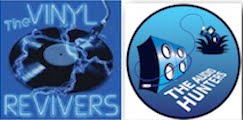

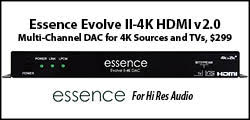

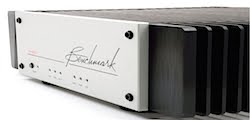


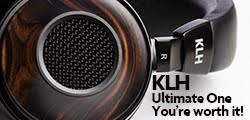
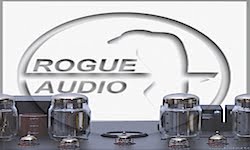
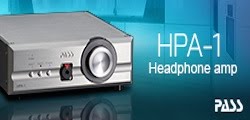

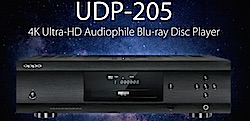
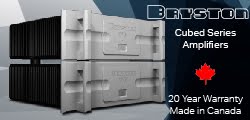

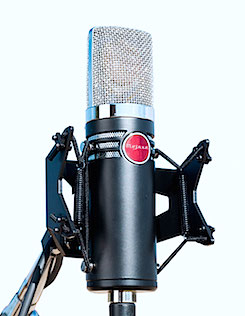
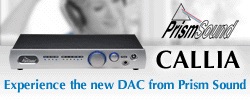
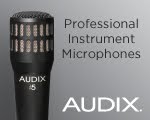

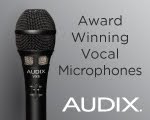
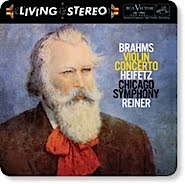





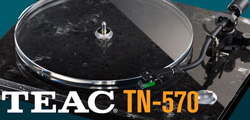


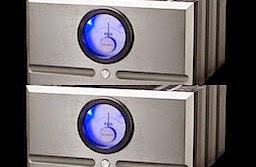
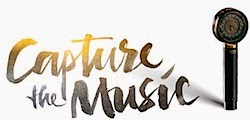


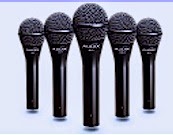


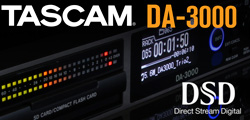

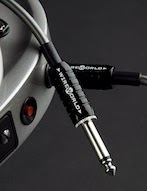

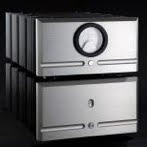









1 comment:
Nice review. The Canton Reference 9.2 DC are one of the best speakers i've listened to, and by far the best speakars i've owned.
/Mikael
Post a Comment